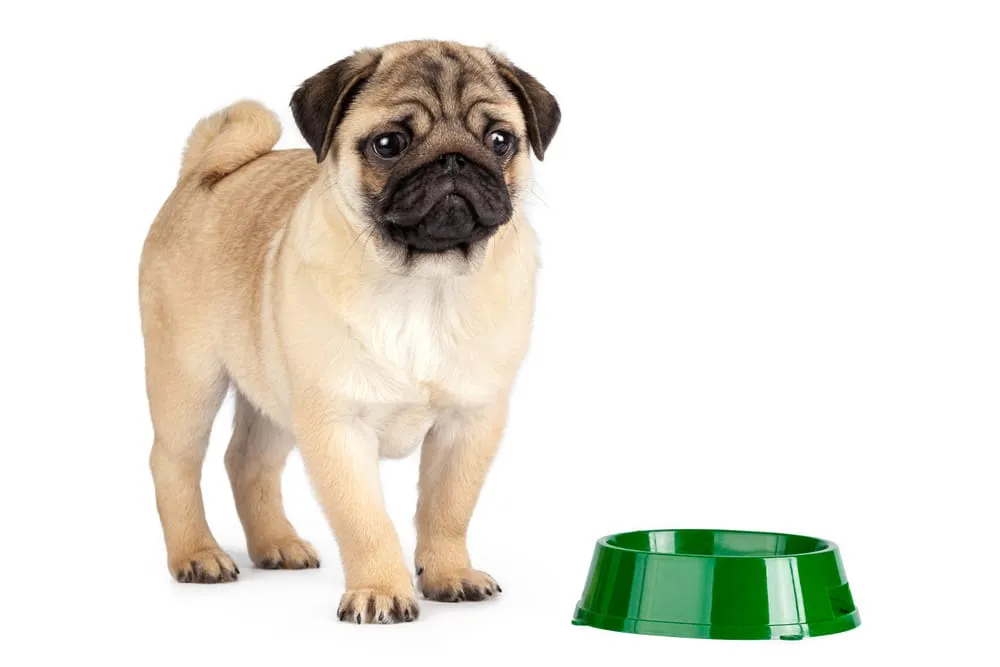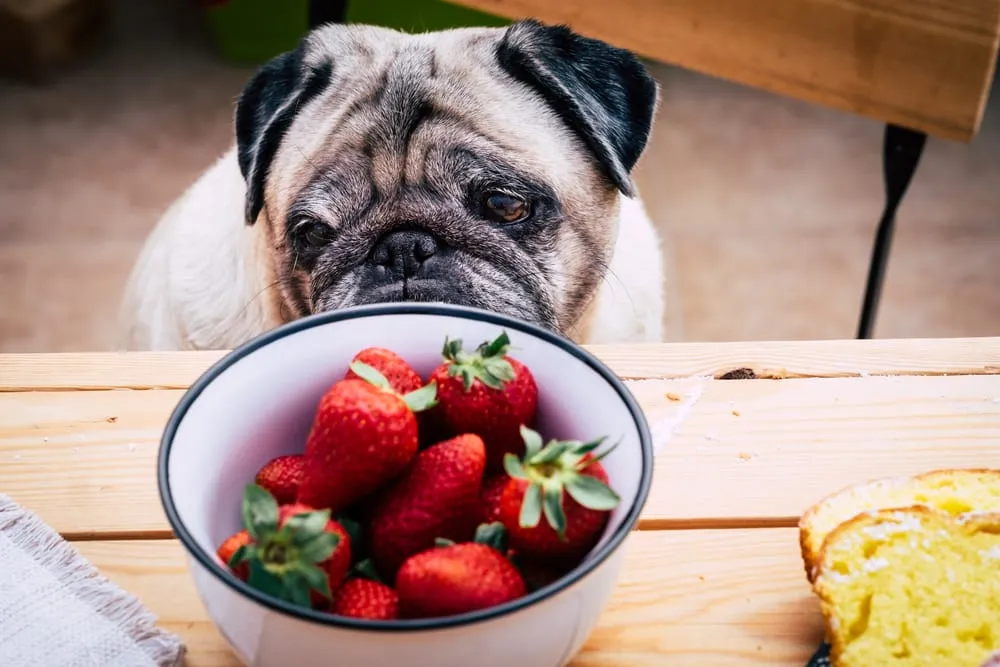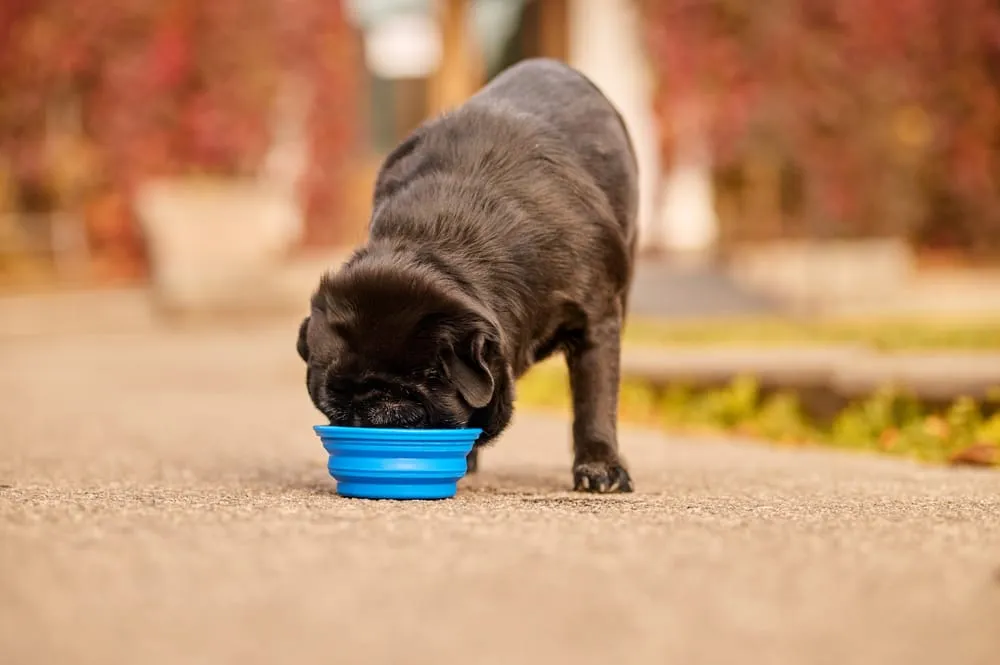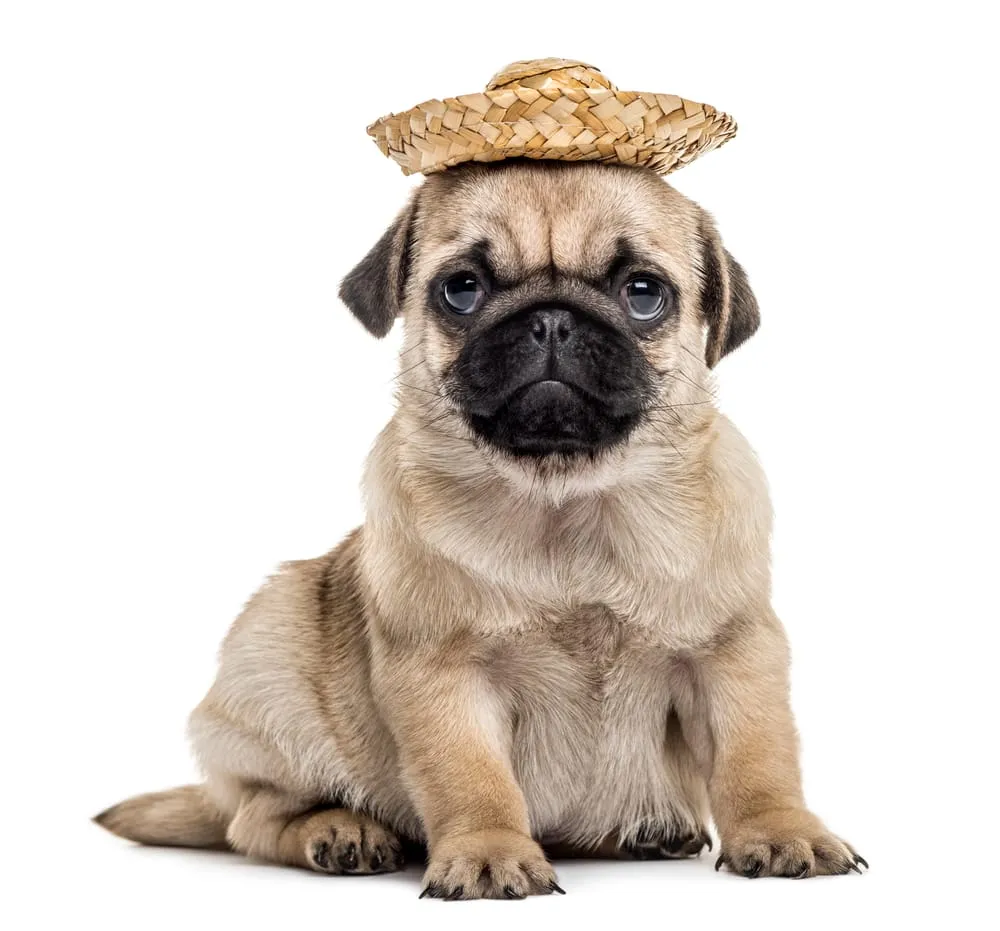Proper nutrition is the cornerstone of a healthy and happy life for Pug puppies, a breed known for its playful spirit and affectionate nature. These small yet sturdy companions come with specific dietary needs that, when met, can prevent a host of health issues and contribute to their overall well-being. From supporting their rapid growth phases to laying the foundation for a healthy adult life, the food you choose for your Pug puppy has long-lasting implications. It's not just about satisfying their appetites; it's about providing a balanced diet that caters to their unique physiological requirements, including their energy levels, bone health, and maintaining their characteristic lean body mass.

This article aims to be an essential guide for Pug puppy owners who are navigating the vast sea of available food options. With an array of choices from dry kibble to wet food, organic to grain-free, the decision can be overwhelming. Our goal is to provide you with comprehensive insights into what constitutes the best food choices for your Pug puppy, considering factors such as nutritional content, ingredient quality, and breed-specific needs. By equipping you with this knowledge, we hope to empower you to make informed decisions that ensure your furry friend grows up healthy, vibrant, and thriving.
| Nutritional Needs | Choosing Food | Recommended Foods | Feeding Schedule | Common Feeding Issues | Transitioning Foods | Additional Considerations |
|---|---|---|---|---|---|---|
| High-quality proteins, fats, carbohydrates, vitamins, and minerals. | Consider age, ingredient quality, dietary sensitivities, and food form. | Grain-free, organic, conventional options with high-quality ingredients. | 3-4 times daily for puppies, reducing to 2-3 times as they grow. | Address pickiness, overeating, underfeeding, and food sensitivities. | Gradual transition from puppy to adult food around 12 months. | Supplements, homemade vs. commercial foods, treats, and snacks. |
Understanding Pug Puppies' Nutritional Needs
Pug puppies, with their distinctive features and playful demeanor, require a balanced blend of nutrients to support their rapid growth and development. The foundation of their diet should include high-quality proteins, essential for building and repairing tissues and supporting overall growth. Proteins from animal sources such as chicken, turkey, and fish are particularly beneficial as they provide the full range of amino acids needed for a healthy, developing Pug.
Fats play a crucial role in a Pug puppy's diet, supplying energy, aiding in the absorption of fat-soluble vitamins, and contributing to the health of their skin and coat. Omega-3 and Omega-6 fatty acids, found in fish oils and flaxseeds, are particularly important for cognitive development and maintaining healthy inflammation levels.
Carbohydrates, while not as essential as proteins and fats, are still important for providing dietary fiber and energy. Sources like sweet potatoes, brown rice, and oats offer slow-releasing energy and aid in digestion. However, it's crucial to balance carbohydrate intake to prevent unnecessary weight gain, a common issue in Pugs.
Vitamins and minerals must be carefully balanced in a Pug puppy's diet to support their immune system, bone health, and overall vitality. For instance, calcium and phosphorus are vital for strong bone development, while antioxidants like vitamins E and C support a healthy immune system.
Pugs have specific dietary needs that cater to their susceptibility to certain health issues. Their rapid growth rate necessitates a diet rich in nutrients to support healthy bone and joint development, reducing the risk of orthopedic problems like hip dysplasia. Moreover, Pugs are prone to obesity, making it essential to monitor calorie intake closely. The right balance of nutrients not only supports their physical development but also mitigates the risk of weight-related health problems.
Pug puppy's diet should be carefully tailored to include the right balance of proteins, fats, carbohydrates, vitamins, and minerals, taking into account their unique breed-specific health considerations. This nutritional foundation is crucial for supporting their growth, preventing obesity, and ensuring the long-term health and happiness of these charming companions.

Factors to Consider When Choosing Food for Pug Puppies
When selecting the perfect diet for your Pug puppy, several key factors must be taken into account to ensure the food meets their specific nutritional and developmental needs.
Age-appropriate food is paramount. Puppies have different nutritional requirements than adult dogs, necessitating a diet that's rich in calories, proteins, and essential nutrients to support their rapid growth and high energy levels. Puppy-specific formulas are designed to provide this delicate balance, promoting healthy development of bones, muscles, and organs. For Pug puppies, it's crucial to choose a formula that also considers their size and breed-specific health predispositions.
Ingredient quality significantly impacts the nutritional value and digestibility of the food. High-quality ingredients mean more natural, less processed, and nutrient-rich components. When reading labels, look for whole protein sources listed at the top, such as chicken, beef, or fish, indicating that the food is protein-rich. Whole grains, vegetables, and fruits should follow as sources of essential vitamins, minerals, and fiber. Be wary of foods with a long list of by-products, fillers, artificial colors, or preservatives, as these can be indicative of lower quality.
Special dietary considerations are especially important for Pugs, who may have allergies or sensitivities to certain ingredients. Common allergens include corn, wheat, soy, and certain proteins. If your Pug puppy shows signs of an allergic reaction (such as itching, digestive issues, or ear infections), consult your vet and consider a limited-ingredient diet to identify and eliminate the problematic ingredient.
Texture and form of the food can also play a significant role in your Pug puppy's overall health and eating habits. Dry kibble is beneficial for dental health, as its crunchy texture helps reduce plaque buildup. It's also more energy-dense, which is suitable for Pug puppies' high energy needs, and tends to be more economical and convenient for storage and feeding. Wet food, on the other hand, can be more palatable and easier to eat for some puppies, and its higher moisture content is beneficial for hydration. However, it's generally more expensive and can contribute to faster dental decay if not supplemented with dental care routines.
Choosing the right food for your Pug puppy involves a careful consideration of their age, the quality and type of ingredients, potential dietary sensitivities, and the form of food that best suits their needs and preferences.
Reviewing Top Recommended Foods for Pug Puppies
Selecting the best nutrition for your Pug puppy is crucial for their growth and overall health. Here, we delve into some top-rated food brands, examining their features, nutritional content, and how they cater to the needs of Pug puppies, along with considering their cost-effectiveness and consumer feedback.
Brand A: Premium Grain-Free Puppy Formula
This grain-free option is tailored for puppies with sensitivities to grains. It features high-quality, deboned chicken as the primary protein source, ensuring that the food is rich in essential amino acids. Sweet potatoes and peas provide easily digestible carbohydrates and fibers, supporting digestive health. The inclusion of omega fatty acids from fish oil promotes cognitive development and a healthy coat. This formula is also enriched with antioxidants, vitamins, and minerals to support a robust immune system. While it's on the pricier side, the quality of ingredients and the grain-free formulation justify the cost, making it a favorite among owners who prioritize grain-free diets for their puppies.
Brand B: Organic Whole Grain Puppy Food
For those preferring organic options, Brand B's whole grain puppy food stands out. It's made with certified organic, free-range chicken and organic grains like brown rice and oats, providing a wholesome and balanced diet. This brand focuses on sustainable and ethically sourced ingredients, appealing to environmentally conscious pet owners. The food is fortified with essential vitamins and minerals, ensuring comprehensive nutrition. Despite its slightly higher price point, its commitment to organic ingredients and environmental sustainability garners positive feedback from consumers who value organic products.
Brand C: Conventional Puppy Kibble
Brand C offers a more affordable option without compromising on the nutritional needs of growing puppies. It includes real poultry as the primary protein source, combined with whole grains, vegetables, and fruits for a balanced diet. Although it's not grain-free or organic, it avoids artificial preservatives, colors, and flavors, making it a solid choice for pet owners seeking quality on a budget. The kibble is specially sized for small breeds, making it easy for Pug puppies to chew and digest. Customer reviews often highlight its excellent value for money and high palatability among puppies.
Comparative Analysis
When comparing these brands, consider your Pug puppy's specific needs, such as any grain sensitivities or preferences for organic ingredients. Price points vary, with grain-free and organic options typically commanding a higher price due to their specialized formulations and premium ingredients. Availability is generally good across the board, with most brands being accessible both online and in pet stores. Customer feedback can offer valuable insights into how well puppies adapt to the food, its palatability, and any noticeable health benefits, making it a useful tool for guiding your final decision.
In conclusion, each of these top-rated brands offers unique benefits, whether it's grain-free, organic, or conventional nutrition. Evaluating your Pug puppy's specific dietary requirements, lifestyle, and your budget will help you choose the most suitable option, ensuring your puppy thrives during their crucial developmental stages.

Feeding Schedule and Portion Sizes for Pug Puppies
Feeding your Pug puppy correctly is vital for their health and development. The feeding schedule and portion sizes will vary as they grow, making it important to adjust their diet to suit their changing needs.
During the early stages of life, Pug puppies require small, frequent meals. From weaning up to 6 months of age, it's recommended to feed them 3 to 4 times a day. This frequent feeding supports their fast metabolism and provides the continuous energy they need for growth and play. As they transition from puppyhood to adolescence, around 6 to 12 months, you can gradually reduce feeding to 2 to 3 times daily. Consistency in feeding times helps establish a routine, aiding in digestive regularity and house training.
Calculating the right portion sizes is crucial to prevent overfeeding and obesity, a common issue in Pugs. Start by following the feeding guide on your puppy food's packaging, which usually suggests portion sizes based on age and weight. However, these are general guidelines, and individual needs can vary based on activity level, metabolism, and health. It's wise to consult with your veterinarian to determine the exact portion size suitable for your Pug puppy's specific needs.
Monitoring your puppy's weight is essential to ensure they're growing at a healthy rate. Regular weigh-ins, either at home or during vet visits, can help you track their progress. Look for visual cues as well; a healthy Pug puppy should have a slight waist and you should be able to feel (but not see) their ribs under a thin layer of fat. If your puppy appears to be gaining too much weight, gradually reduce their food intake and increase their activity level. Conversely, if they seem underweight, slightly increase their food portions.
By following these guidelines and maintaining open communication with your vet, you can ensure your Pug puppy remains healthy and happy throughout their formative months.
Addressing Common Feeding Issues and Solutions
Feeding Pug puppies can sometimes be challenging due to their unique breed characteristics and potential health issues. Addressing common feeding problems early on is crucial for their well-being.
Pickiness: Pug puppies can be notoriously picky eaters. To combat this, try varying their diet slightly to include different flavors and textures, making mealtime more appealing. Ensure that the food is fresh and served at room temperature to enhance its smell and taste. Consistency is key; avoid frequently changing their diet, as this can exacerbate pickiness.

Overeating: Pugs have a tendency to overeat if given the chance, leading to obesity and related health problems. It's essential to strictly adhere to recommended portion sizes and resist the urge to give in to those pleading eyes. Using puzzle feeders can slow down their eating pace and make meals last longer, providing mental stimulation and helping prevent weight gain.
Underfeeding: If your Pug puppy seems underfed or isn't showing interest in food, first rule out any potential health issues with a vet visit. If health isn't a factor, the issue might be with the food's palatability or the feeding environment. Ensure a quiet, stress-free area for eating and consider warming the food slightly to enhance its aroma.
Sensitive Stomachs and Food Allergies: Pug puppies may have sensitive stomachs or allergies to certain ingredients, manifesting as digestive upset or skin irritations. Identifying and eliminating the offending ingredient is crucial. Start with a simple, limited-ingredient diet to isolate potential allergens. Gradually introduce new foods one at a time to monitor reactions. Probiotic supplements can also aid in maintaining gut health, improving digestion and absorption.
By understanding and addressing these common feeding issues, you can ensure your Pug puppy enjoys a healthy, balanced diet, setting the stage for a long and happy life.
Transitioning from Puppy Food to Adult Food
Transitioning your Pug from puppy food to adult food is a critical step in their development, typically recommended around 12 months of age. However, due to the Pug's size and growth rate, some may be ready to transition as early as 9-10 months. It's essential to consult with your veterinarian to determine the optimal timing based on your Pug's specific growth and health status.
To ensure a smooth transition and minimize the risk of digestive upset, follow these step-by-step instructions:
- Start Slowly: Begin by mixing a small amount of adult food with the puppy food. A good starting ratio is 25% adult food to 75% puppy food.
- Gradual Increase: Over the next 7-10 days, gradually increase the proportion of adult food while decreasing the amount of puppy food. Monitor your Pug's response to the new food closely, looking out for any signs of digestive discomfort such as diarrhea or vomiting.
- Equal Portions: By the mid-point of the transition period, aim for a 50/50 mix of puppy and adult food. This balance helps your Pug's digestive system adjust to the new diet.
- Complete the Transition: Gradually shift the balance until you're feeding 100% adult food by the end of the transition period.
- Monitor and Adjust: Even after fully transitioning to adult food, keep an eye on your Pug's health and weight. Adjust portions as necessary to maintain optimal condition.

Remember, patience and attentiveness are key during this transition. Each Pug is unique, and some may require a slower transition than others. Ensuring a smooth dietary change will help maintain your Pug's digestive health and overall well-being as they step into adulthood.
Additional Considerations for Feeding Pug Puppies
When feeding Pug puppies, there are additional factors beyond basic nutrition that can influence their health and development.
Supplements: While a well-balanced commercial puppy food should provide all the necessary nutrients, there are situations where supplements may be beneficial. For instance, omega-3 fatty acids can support brain development and coat health, and probiotics can aid digestion. However, indiscriminate supplementation can lead to imbalances and health issues, so it's crucial to consult a veterinarian before adding any supplements to your Pug puppy's diet.
Homemade Diets vs. Commercial Foods: Homemade diets offer control over ingredients, ensuring freshness and quality. However, creating a balanced homemade diet that meets all of a Pug puppy's nutritional needs is challenging and time-consuming. Nutritional deficiencies are a risk without proper knowledge and planning. In contrast, high-quality commercial foods are formulated to meet puppies' specific nutritional requirements, ensuring a balanced diet. The choice between homemade and commercial diets should consider factors like time, budget, and the ability to meet nutritional guidelines.
Treats and Snacks: While treats can be an effective training aid and a way to show affection, they should be used sparingly. Treats and snacks can quickly add extra calories, leading to weight gain. Choose low-calorie, nutritious treats and ensure they make up no more than 10% of your Pug puppy's daily calorie intake. Also, consider using a portion of their regular kibble as treats during training sessions to avoid overfeeding.
Balancing these additional considerations with a well-rounded diet will help ensure your Pug puppy grows into a healthy and happy adult dog.
Conclusion
In conclusion, providing your Pug puppy with the right nutrition is foundational to their health and happiness. A balanced diet rich in essential nutrients, tailored to their unique needs, supports their rapid growth and development. Choosing age-appropriate, high-quality food, considering special dietary needs, and managing portion sizes are crucial steps in nurturing a healthy Pug. Additionally, transitioning to adult food should be done gradually to avoid digestive issues. While supplements, homemade diets, and treats can play a role in your Pug's diet, they should be approached with care and moderation. Ultimately, the effort invested in selecting the best food for your Pug puppy lays the groundwork for a long, joyful, and healthy life together.
FAQs
- Q: How often should I feed my Pug puppy?
- A: Pug puppies should be fed 3-4 times a day up until 6 months of age, after which you can reduce feeding to 2-3 times daily.
- Q: What type of food is best for my Pug puppy?
- A: Select a high-quality puppy formula that provides a balanced diet. Look for foods that list real meat as the first ingredient and include a variety of whole grains, vegetables, and fruits.
- Q: Can I give my Pug puppy human food?
- A: While some human foods are safe in small quantities, others can be harmful. It's best to stick to dog-specific foods and treats to avoid any health issues.
- Q: How do I know if my Pug puppy is overweight?
- A: A healthy Pug puppy should have a slight waist and you should be able to feel their ribs without a thick layer of fat. Regular vet check-ups can help monitor their weight.
- Q: When should I switch my Pug from puppy food to adult food?
- A: Most Pugs are ready to transition to adult food around 12 months of age, but this can vary. Consult your vet to determine the best timing for your puppy.




